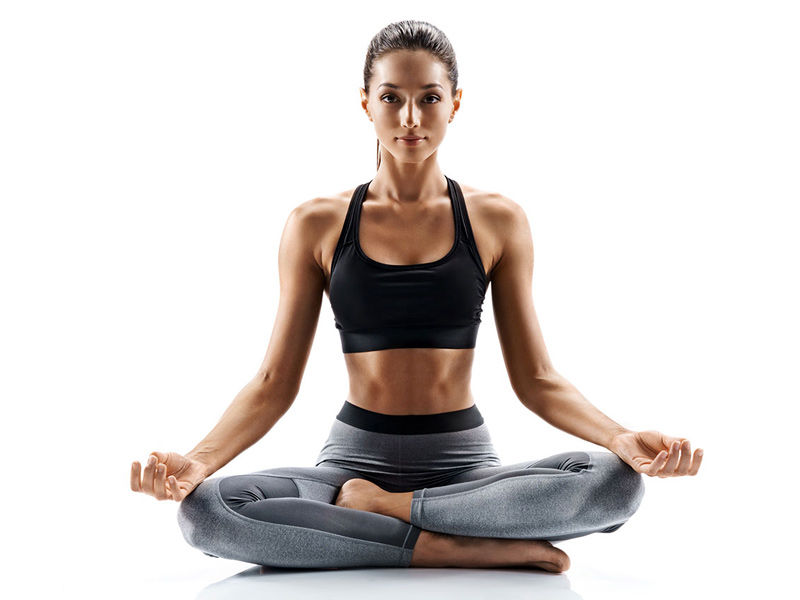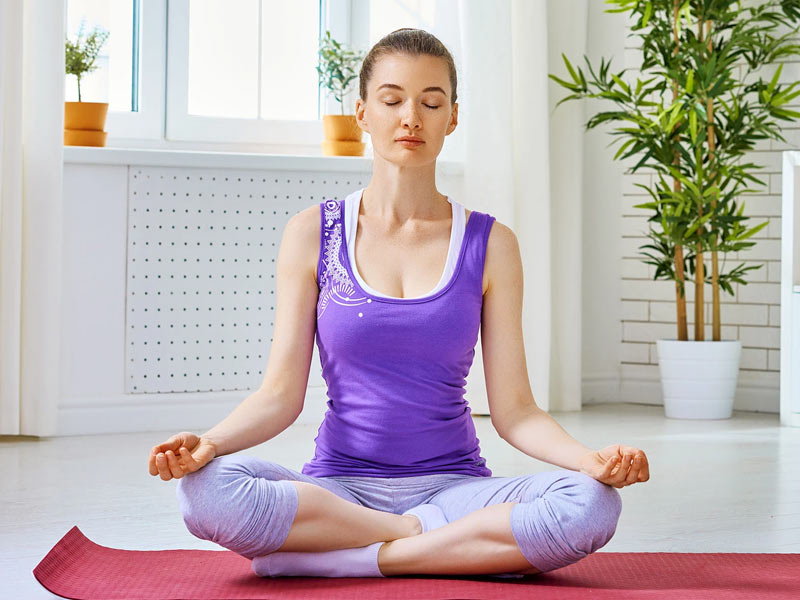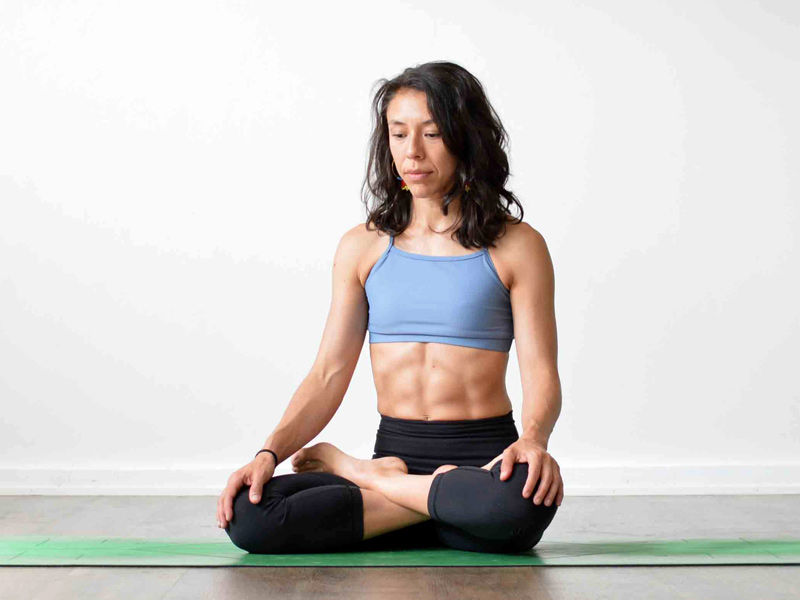-
The Padma means Lotus, and Asana means posture, stance, or position.
-
Pronounced : Pa-dah-maa-sun-aa
-
And there are many amazing Padmasana Benefits you never heard of
Padmasana, also known as the Padmasana, is a cross-legged yoga posture that aids in the deepening of meditation by relaxing the mind and relieving various physical problems. A consistent practice of this position, like a lotus, assists in the general flowering of the practitioner, thus the name Padmasana. The Lotus stance is also known as the Vajra position in Chinese and Tibetan Buddhism.
How to Perform Padmasana (Lotus Position)

- Sit on the floor or on a mat with your legs extended out in front of you, spine erect.
- Bend your right knee and rest it on your left thigh. Make sure the soles of your feet point upward, and your heel is near to your abdomen.
- Rep the previous step with the opposite leg.
- Place your hands on your knees in a mudra posture with your legs crossed and feet on opposing thighs.
- Maintain a straight spine and a straight head.
- Continue to hold and take long, soft breaths in and out.
Padmasana Mudras are hand gestures for the pose of Padmasana (Lotus Position)
Mudras increase the flow of energy in the body and can have incredible results when combined with Padmasana. Every mudra is unique, as are the benefits it provides. You can enhance your meditation by integrating Chin mudra, Chinmayi mudra, Adi mudra, or Bhrama mudra while sitting in Padmasana. While in the mudra, breathe for a few minutes and pay attention to the flow of energy in your body.
Also Read, These Yoga Poses Will Help You Increase Your Height
Padmasana (Lotus Pose) for Novices

Suppose you have difficulty overlapping both legs when sitting in Padmasana. In that case, you can sit in Ardha – Padmasana (Half – Lotus position) by resting either one leg on the opposite thigh. Continue to do so until you are flexible enough to go on to Padmasana.
Padmasana can be followed by Adho-Mukho Svanasana.
The Padmasana has the following advantages:
1. Hip Release: Padmasana benefits efficiently expands and releases accumulated hip tension. The stretching impact of the posture reduces stiffness, relieves stress, fear, and negativity, enhancing hip flexibility and ensuring health and wellbeing.
2. Improved Posture and Spine Health: As you sit tall in the Padmasana, the spine is stretched, which aids in the maintenance of its flexibility and natural ‘S’ shaped curvature. A healthy spine leads to better posture, which lowers the risk of back pain and other health problems.
3. Reduces Menstrual Symptoms: Many of us experience bloating, cramps, discomfort, pain, and other symptoms throughout the menstrual week. Yoga activities might help you enjoy your menstrual week with less pain and discomfort. Perform Padmasana, which stretches the pelvic region and increases blood flow to it, resulting in pain-free menstruation. The regular performance also helps to make delivery easier.
4. Quiet the Thoughts: The Padmasana is used for meditation activities, which helps calm the mind and rest the body. The physiological consequences of the posture revitalize the body in preparation for intensive meditation practices, assisting you in finding calm and reaping Padmasana benefits.
5. Stretches Ankles and Knees: The Padmasana’s bending of the knees and arrangement of the ankles aids the stretching of these two body components. In addition, the extension helps relax these regions, enhance their range of motion, and alleviate discomfort in certain areas of the body.
6. Encourages Union: The ultimate objective of yoga science is the union of body, mind, and spirit. Chanting a mantra while in a lotus yoga asana cleanses, liberates, and harmonizes the entities’ bodily, mental, and spiritual wellbeing.
7. Disease Destroyer: The Padmasana aligns the body in such a way that the different lymphatic nodes, acupuncture sites, and organs are stimulated, ensuring optimal human system functioning and improved health.

Padmasan Physical Advantages:
- Hips are opened up as a result of this exercise.
- Ankles and knees are stretched.
- Relaxes the mind
- Improves alertness and attentiveness
- Maintains the spine’s straightness and aids in the development of healthy posture
- Relieves menstruation cramps and sciatica
- Maintains joint and ligament flexibility by stimulating the spine, pelvis, abdomen, and bladder.
- Energy levels are restored.
Also Read, The Yoga you need to Reduce Weight
Office employees will like this.
Most individuals sit in their seats for long periods when working in an office or business. This is because they don’t have time to sit with their knees folded. If you can’t practice Padmasana at your office, try moving your feet clockwise and counterclockwise at regular intervals for a few minutes. Office employees do not sit in their chairs for lengthy periods. Instead, attempting to stand up and walk for a minute at regular intervals.
Padmasana is a fantastic workout. Although it is beneficial for your mind and breathing, it conditions the body and core, promoting flexibility. Muscles need to be challenged to their limits if you want to gain strength, and while yoga may be rigorous, it has its limitations. Although utilizing simply your body weight might be difficult initially, your muscles rapidly adapt, so the benefits lessen over time. A consistent practice of this position, like a lotus, assists in the general flowering of the practitioner, thus the name Padmasana.
Padamam means Lotus, and Asana means seat, which signifies sitting in a position with no movement. It is critical to remain attentive and conscious while performing any Asanas. Your mind must be calm and focused while practicing yoga.

























